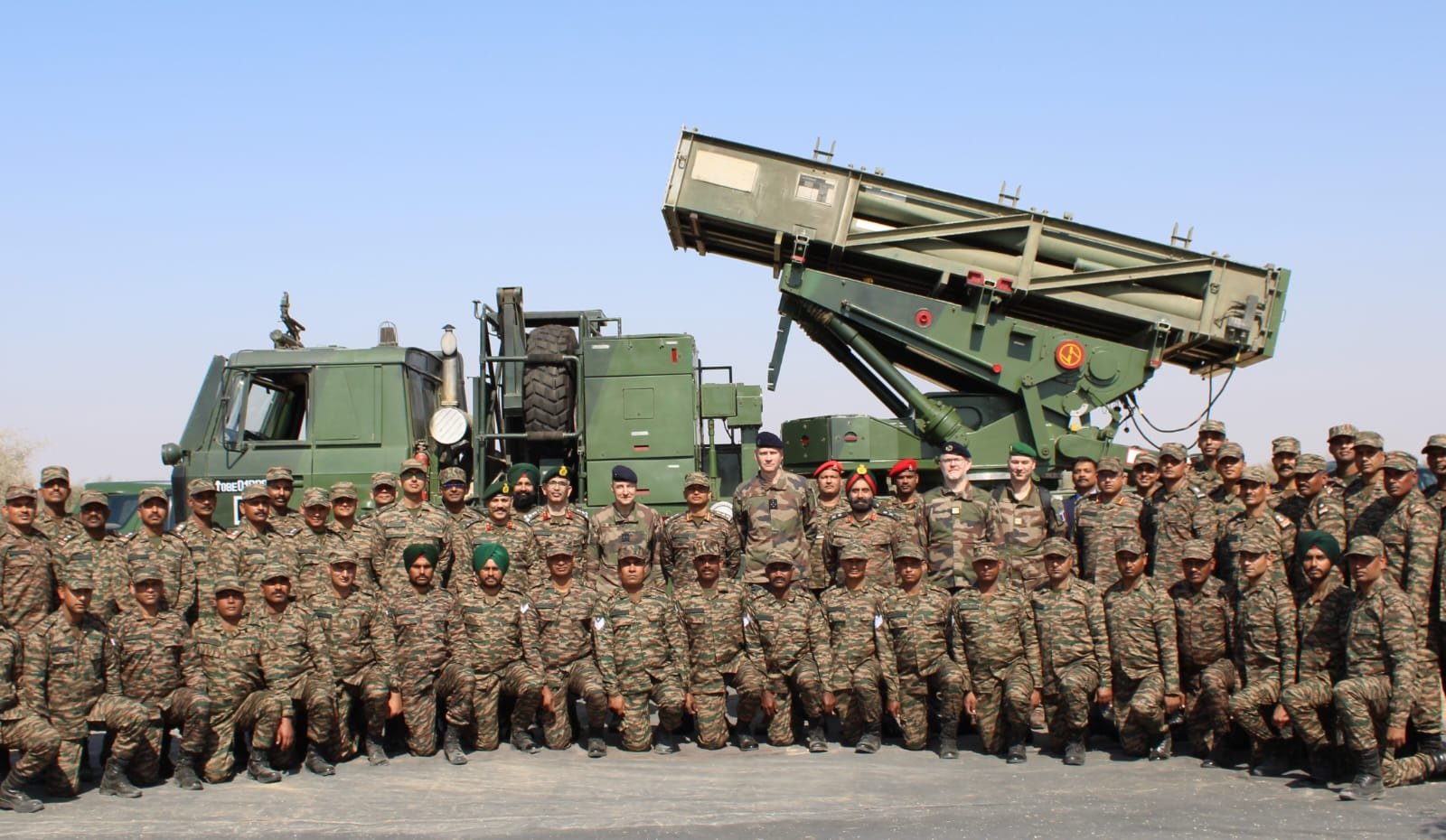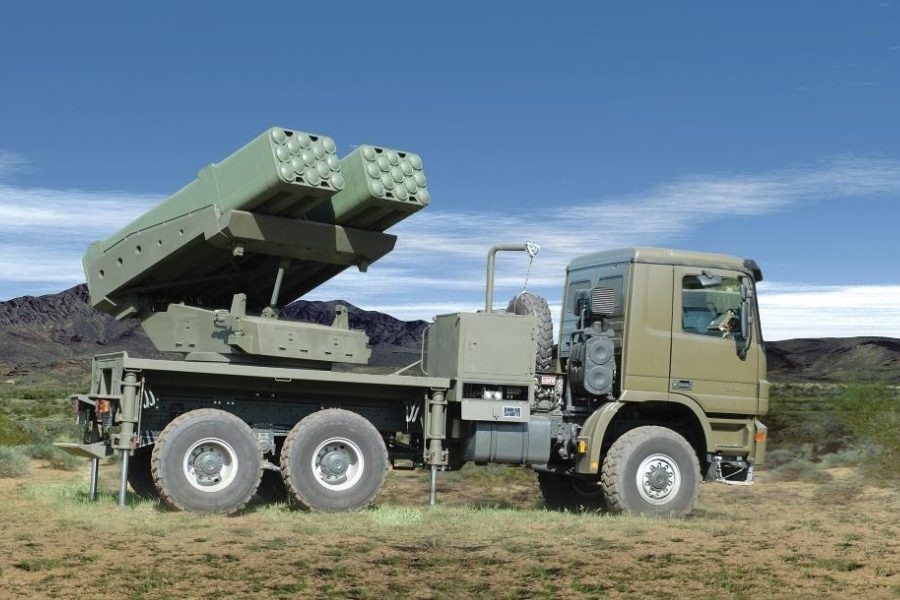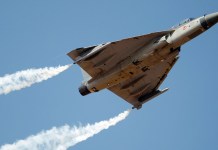France is considering purchasing the Indian 214-mm Pinaka MBRLS (Multiple Barrel Rocket Launch System) as part of its program to replace the American M270 MLRS missile systems.
France’s interest in the Pinaka system is surprising because several European countries are contemplating purchasing the Israeli PULS multi-caliber rocket system as a replacement for the M270 MLRS.
PULS Multi-Caliber Rocket System
The Israeli PULS (Precise and Universal Launching System) is an advanced, modular, multi-caliber rocket artillery system developed by Israel’s Elbit Systems.
“Turbo Boost” To India’s Conventional Deterrence: LR-LACM Maiden Test Much More Than A Routine Success
Designed for maximum flexibility, PULS supports a range of rocket calibers, enabling operators to choose different munitions based on mission requirements.
PULS Can Launch
- 122 mm rockets with 40 km range
- 160 mm rockets with 45 km range
- 306 mm rockets with 150 km range
- Heavy rockets and missiles like the EXTRA and Predator Hawk, capable of 300 km range
PULS uses a modular architecture and is designed to be platform-agnostic. It can be integrated on a variety of wheeled or tracked chassis, including 4×4, 6×6, and 8×8 configurations. The system can be configured for different terrains, such as open deserts, urban areas, or rugged mountainous regions.
PULS can be integrated into existing command-and-control networks or operate autonomously, receiving targeting data directly from UAVs, radar, or forward observers.
Its versatility, combined with precise targeting capabilities, makes it highly suitable for modern battlefield environments where adaptability, speed, and accuracy are critical.
Historic First! U.S. & Russian-Origin Aircraft Fly Together! KC-135 Refuels Su-30 MKM Fighter In Rare Bonhomie
Pinaka MBRLS
India’s Pinaka Mk.2 is an advanced MBRLS developed by the Defence Research and Development Organisation (DRDO)
Pinaka Mk.2 is an extensive upgrade to the Pinaka Mk.1 MBRLS, which the DRDO developed to replace the obsolescent Russian GRAD BM-21.

Pinaka Mk.1 MBRLS
The Pinaka Mk.1 is a free-flight artillery rocket area bombardment system designed to supplement the Indian Army’s existing 105 mm artillery guns, which have a range of 37.5 km.
Featuring quick reaction time and a high rate of fire, a single Pinaka system fires a salvo of 12 HE rockets from a multi-barrel launcher in 44 seconds.
A 214 mm bore Pinaka rocket has a payload of 100 kg. A salvo fire can neutralise an area of 1000x800m. It can be fitted with various warheads, such as anti-tank mines and blast-cum-pre-fragmented high explosives.
Pinaka Mark I development started in 1988, and a prototype version was deployed in combat in the Kargil War of 1999. After it was proven in user trials in 2002, production orders were placed. As of November 2020, four Pinaka regiments were in service, and another six were under procurement.
Champions Trophy: With 653 Terror Attacks In 2024, Highest In A Decade, Is Pak Safe To Host Mega Cricket Event?
Pinaka Mk.2 MBRLS
Pinaka Mk.2 214 mm rockets feature a 250 kg warhead and use a new propulsion system with canard-based aerodynamic controls. They have an extended range of up to 60-75 km, significantly greater than the 40 km range of the Mk.1 version.
Additionally, the rockets are guided to their target using a combination of inertial navigation (INS) and satellite navigation (SATCOM).
Pinaka Mk.2 includes a digital fire control system (FCS) that coordinates with battlefield command and control (C2) systems.
Mounted on a Tatra high-mobility vehicle, the Pinaka Mk.2 system is designed for quick deployment and shoot-and-scoot tactics, allowing it to evade enemy counter-battery fire.
“100” J-10 Fighters: Iran Examines China’s Vigorous Dragon At Zhuhai Air Show Amid Rising Israel Tensions
Why France Wants Pinaka, Not PULS
Clearly, the Israeli PULS MLRS is more potent and versatile than the Pinaka Mk.2.
It’s being speculated that France is looking at the Pinaka, not the PULS like other EU nations, because of its recent fallout with Israel over the latter’s brutality against the Palestinians in Gaza and Lebanon.

Of course, the French don’t say that.
.
“We are evaluating the Pinaka multi-barrel rocket launcher system because we need a system like that. We are evaluating the system among the other systems offered by the top countries offering such systems. India is among the top countries producing weapons,” French Army’s Brigadier General Stephane Richou told ANI.
“This is much more than business partnership, and this is cooperation, and this is a common future together,” he said.
It’s interesting to note that the DRDO earlier partnered with Sagem of France to improve the accuracy of the Pinaka rockets. In June 2010, Sagem reportedly delivered its Sigma 30-Ring Laser Gyroscope (RLG) system for integration with 2 Pinaka regiments. The system was to be integrated by Tata Power SED and Larsen & Toubro.
Unlike conventional gyros, RLGs are very accurate and robust. An RLS-based INS system can accurately track a rocket’s flight path and provide guidance inputs in the absence of SATNAV signals due to jamming.
The Sigma 30 system can be used with a wide range of artillery platforms, including self-propelled howitzers, mortars, and multiple rocket launchers.
It is also compatible with various fire control systems, enabling seamless integration with existing artillery and command systems.
It’s highly likely that the Sigma 30 RLG has been integrated into series production Pinak Mk-2 rockets.
Using a combination of Sigma 30 INS and SATNAV, Pinaka Mk-2 rockets can achieve an accuracy of less than 30 m. During trials, DRDO officials claimed that the rockets could strike within 10 meters of the target.
“This high accuracy means that just two (Pinaka Mk.2) rockets must be fired to assure a kill probability of more than 99 percent,” said Dr V Venkateswara Rao, the ARDE director.
HIMARS vs PINAKA: How Does Indian Multi-Barrel Rocket Launcher System Stack-Up Against U.S. Counterpart?
Assured Upgrades
The Indian Army has given ARDE the go-ahead to develop Pinaka MBRL (Multiple Barrel Rocket Launcher) variants with 120 km and 300 km ranges.
It’s not known if the longer-range Pinaka missiles proposed for development will feature terminal guidance. Hopefully, they will.
Conclusion
There are other good reasons why France could be looking at India’s Pinaka MBRLS.
India is no longer just a good market for French military hardware; it’s also a credible partner for joint weapon system development. Joint weapon system development by India and Russia yielded good results, and the French, too, now likely see the potential.
A closer partnership in defense manufacturing with India will allow France to tap into the country’s talent pool, cutting costs and reducing dependence on its traditional partners.
- Vijainder K Thakur is a retired IAF Jaguar pilot, author, software architect, entrepreneur, and military analyst.
- VIEWS PERSONAL OF THE AUTHOR
- Follow the author @vkthakur




